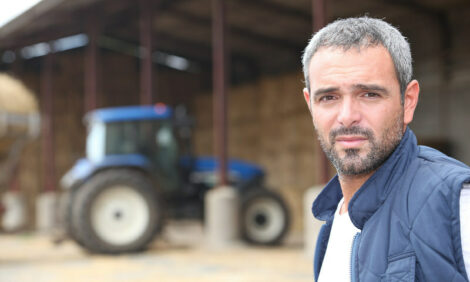



Research Importance Highlighted at Western Australia Pig Event
AUSTRALIA - Research and development underpinning modern pork production systems was highlighted at the 2015 Pig Day Out, co-hosted by West Australian Pork Producers’ Association (WAPPA) and Department of Agriculture and Food Western Australia (DAFWA).While addressing a brief WAPPA General Meeting at the event, WAPPA President Richard Evison commended Western Australia’s producers on how well they collaborated with researchers and research institutions.
“Producer adoption rate of innovative technologies, especially those that directly improve bottom lines, reflects the quality of the research that, in many cases, the producers are co-funding and this sustains WA’s industry,” Mr Evison said.
Highlights of the morning session at the Pig Day Out included Dr Megan Trezona of DAFWA addressing the issue of the impact outdoor production was having on product quality, as demand for free range pork rises. Around 20 per cent of the state’s pig kill is now sourced from free range enterprises.
Complementing her address, which touched on feed and feed conversion ratios, DAFWA colleague Karen Moore, detailed her work on the dietary needs and feeding strategies for finisher pigs, before also presenting her research into the impact on body composition and eating quality after pigs have received the second dose of Improvac.
Dr Cam Jose of Murdoch University discussed how predicting ultimate muscle pH can help measure subsequent eating quality and Dr Jae Kim of DAFWA demonstrated that feeding Vitamin E to finishers could help deliver a premium pork product.
In the afternoon, Western Australia Liberal Senator and former veterinarian, Chris Back, explained how his proposed private members’ anti-trespass bill, if and when passed, would make a positive contribution to animal welfare.
James Battams and Janine Price, both of Australian Pork Limited, told attendees including many producers, that correctly registering pig movements and appropriately dealing with environmental applications, while sometimes burdensome, is necessary to address community and biosecurity concerns.
Ms Price’s environmental presentation was complemented by one from consultant Ian Kruger, who explained how using a greenhouse gas calculator could help producers understand and manage their farm’s greenhouse gas emissions.
“Using the Pig Gas Calculator to identify emission intensity levels, efficiencies in production and appropriate waste management systems can only aid Australian pig farmers in becoming more environmentally friendly and efficient,” Mr Kruger said.
Dr Trish Fleming of Murdoch University discussed her research at a Great Southern outdoor piggery into the predatory impact of foxes, especially on piglets. She indicated that some sows seemed to be more protective of their litters than others.
The final presentation was from Portec veterinarian Kim Nairn.
Aside from discussing the unpleasant subject of abattoir condemnations, Dr Nairn was most uplifting when commending producers and their staff for the initiatives they showed in and around their piggeries, subsequently announcing a substantial cash prize for the forthcoming ‘Portec Producer Ingenuity Awards’.
Western Australia’s pork industry employs an estimated 1700 full and part-time workers and an estimated A$50 million has been invested in housing and production systems during the past five years to meet new guidelines for sow housing and production efficiency.








